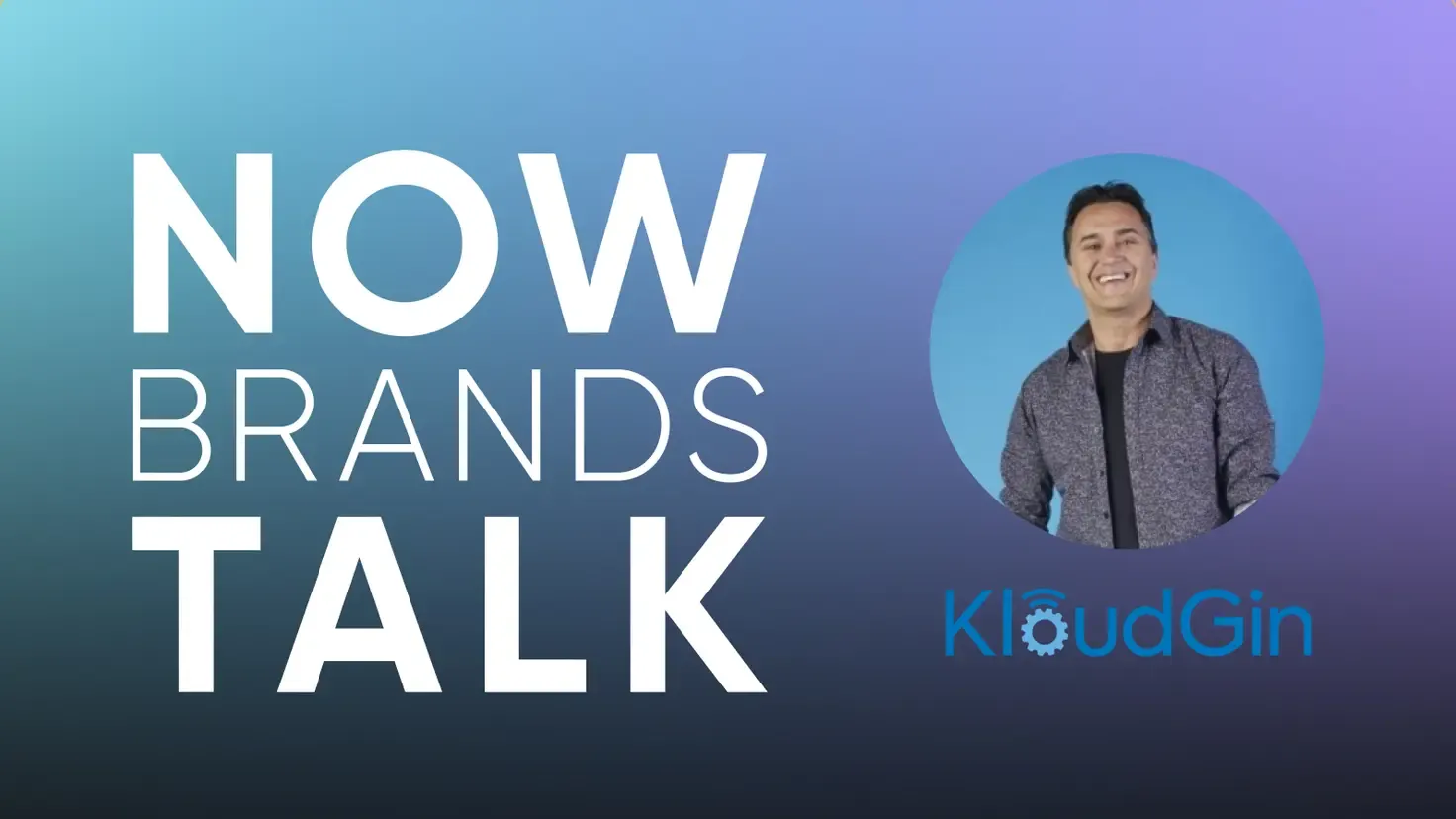
Guide to interviewing AI Agents
What makes an AI Agent different from the typical chatbots you’ve used in the past? Is the impact on ROI really that high?
Learn More

The whole organization needs to be on the same page, and that goes for marketing and sales in particular. How do we do away with the us-versus-them mentality that has lingered so long between two such interconnected teams?
In this episode, we speak with Miguel Adao , SVP Marketing at KloudGin , about creating tight alignment between sales and marketing.
Join us as we discuss:
Find this episode of Now Brands Talk on your favorite podcasting platform.
Tune in"Sales and Marketing do not need to be an us-vs-them conflicting internal struggle. For many years, it felt like that."


The key to success is talking to the right person, at the right time, with the right message. You've got to speak the same language in every single interaction — from sales to marketing, from customer success to the product team, from HR to finance.
Speaking the same language doesn't just refer to vocabulary. It's about values. It's about messaging. It's about storytelling and weaving a common thread that becomes a corporate message.
So, it's absolutely crucial that sales — including the entire business development function, pre-sales, and solution architects — be on the same page as the marketing team. And they all need to be singing from the same sheet collectively as an organization.
When that's not happening — when voices diverge and notes are discordant — we confuse the prospects. We distance ourselves from, or even antagonize, our target audiences. Cohesiveness throughout everything is key to alignment between sales and marketing.
What does that cohesiveness look like in practice? You need to:
"If we don't keep the customers as our north star, we get so intensely consumed by the internal conversations that we forget the customer experience."


Internal cohesiveness isn't the end goal, however. Customers are our North Star.
We know that's true, of course, but it's easy to forget. We get so consumed by internal conversations and intense discussions we forget about the moments of truth. Some might call these moments "touchpoints across the journey."
We're all on the customer journey. We bring somebody along with us — a consumer, a business, a partner — on the journey from awareness to consideration and from preference to purchase. On this journey, we have to align our message.
We know that, too.
And yet… sales and marketing can turn into an us-versus-them scenario — a conflicting arrangement that drags on for years. This won't work.
Your new mantra has to become "we're all in this together." Your North Star has to stay your customer. And your journey has to move logically along a series of touchpoints.
"Ultimately, my key KPI is opportunities. It's opportunities and pipeline."


At the end of the day, Miguel describes his key KPI as almost counterintuitive. "I don't own it, per se, but it's opportunities," he declared. "It is opportunities, and it's pipeline."
That's what he's tasked with. Now, Miguel can't directly own an opportunity because it takes a different trajectory — going from marketing to the SDR, BDR, account executive, etc. It's an indirect motion. "But I want my team and I to be absolutely invested in that," he told us.
We asked him: What are the marketing-influenced, marketing-led, marketing-sourced, and marketing-qualified leads that have translated into sales-accepted leads, and ultimately into opportunities with a pipeline dollar tied to it?
"It's tricky," Miguel said. "Measuring attribution is a holy grail that nobody has quite mastered." What we do know is that, mathematically speaking, it's almost proven that the better your pipeline, the better your revenue number will be. If we can help an organization, whether it's a startup or a Fortune 50, to grow that pipeline, then that's what we need to be focusing on.
For some brands, it's easy. Sink money into television over a long time and you'll create a pipeline. For most companies, however, that's not an option.
So look at your funnel — top, middle, and bottom. At the bottom of the funnel, you have sales acceleration. That's where you want to play, but you can't get there if you don't have a demand generation engine. And you can't have a demand generation engine without brand awareness.
What is brand awareness? How do you create it? How do you measure it?
You know you've reached brand awareness when prospective customers feel comfortable with the idea that you are a reputable, bonafide company that can deliver solutions and meet their challenges. You can't do that with social media and email marketing alone. You have to be able to answer questions such as:
Miguel knows brand awareness is happening when a customer says, "I saw your new ad on LinkedIn." Or the viral campaign… Or the influencer post… Or whatever.
Listen to your customer.
Hungry for more? Find more episodes of Now Brands Talk on your favorite podcasting plaform.
Tune in